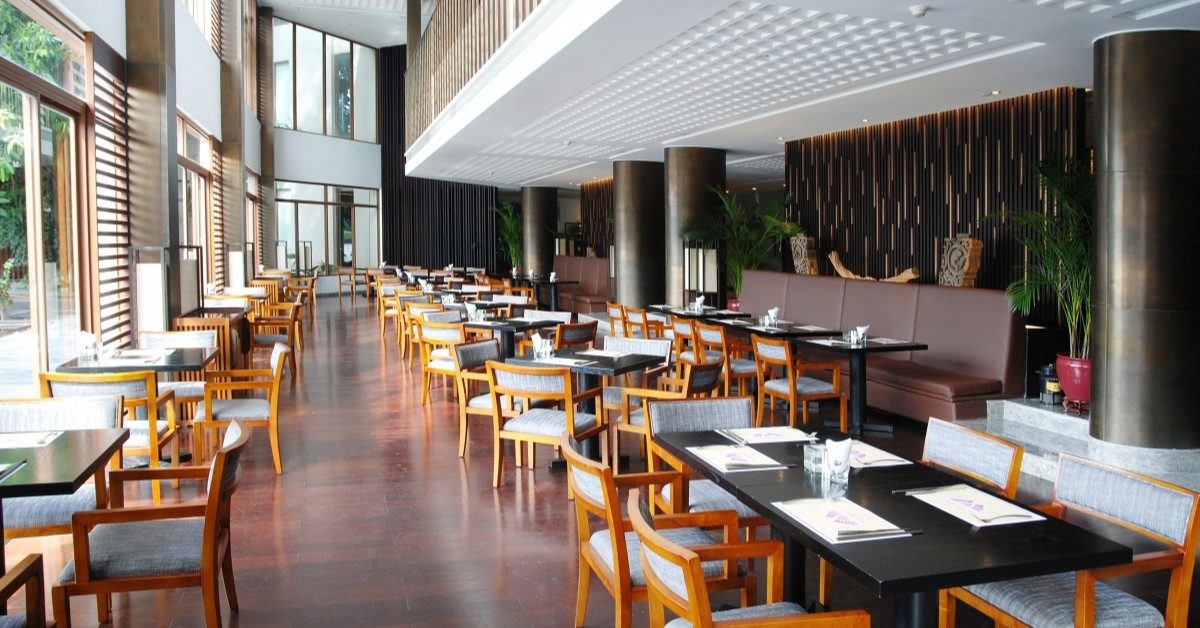Cross-Contact vs. Cross-Contamination: Clearing Up Confusion
There are many people who have food allergies that range from sensitivity to life-threatening, which is why hotel food safety is so important.
While it can be fairly easy for people with food allergies to make necessary adjustments when they are at home, traveling can bring a number of difficult issues to the forefront.
Hotel dining presents a unique set of challenges when it comes to ensuring the safety and well-being of guests with dietary restrictions.
In this blog, we’ll walk you through the critical topic of food safety at hotel restaurants. We’ll explore the best practices for preventing cross-contamination and cross-contact, how you can accommodate dietary needs and provide a worry-free dining experience for travelers with food allergies and sensitivities.
Cross-contact and cross-contamination are both food safety concerns, but they have distinct differences:
Cross-contact is primarily a concern for individuals with food allergies or intolerances. It involves the transfer of allergenic proteins from one food to another, causing an adverse reaction in sensitive individuals. This can happen when a surface, utensil, or equipment previously in contact with an allergen is used without proper cleaning to prepare other foods.
Cross-contamination occurs when harmful microorganisms, such as bacteria, are transferred from one contaminated surface or food to another, potentially leading to foodborne illnesses. This can happen through direct contact, like using the same cutting board for raw meat and vegetables, or indirect contact, such as through contaminated utensils or hands.
Examples of Cross-Contact (Food Allergens)
- Peanut Allergy: Using a knife to spread peanut butter on bread and then using the same knife to spread regular butter on a different piece of bread, potentially leaving peanut residue on the butter. This could be harmful to someone with a peanut allergy.
- Gluten Sensitivity: Toasting regular bread in a toaster and then toasting gluten-free bread in the same toaster without cleaning the crumbs, leading to gluten cross-contact for someone with celiac disease.
- Shellfish Allergy: Grilling shrimp on a barbecue and then grilling vegetables on the same grill without proper cleaning, potentially transferring shellfish proteins to the vegetables.
- Nut Allergy: Chopping nuts on a cutting board and then using the same board and knife to cut vegetables without thorough cleaning, resulting in nut residue on the vegetables.
Examples of Cross-Contamination (Pathogens)
- Raw Meat and Vegetables: Chopping raw chicken on a cutting board and then cutting vegetables on the same surface without washing it, potentially transferring harmful bacteria like Salmonella to the vegetables.
- Hand Contamination: Touching raw eggs and then handling ready-to-eat foods, such as a sandwich, without proper handwashing can spread pathogens like E. coli.
- Sponge or Dishcloth: Using a sponge or dishcloth that has been in contact with raw meat juices to wipe down kitchen surfaces, which can transfer bacteria and lead to cross-contamination.
- Refrigerator: Storing raw meat above ready-to-eat foods in the refrigerator, causing meat juices to drip and contaminate the foods below.
- Inadequate Cleaning: Failing to clean and sanitize kitchen tools and equipment between uses, allowing bacteria to persist and cross-contaminate food.
Remember that both cross-contact and cross-contamination can have serious health implications. It’s essential to maintain good food safety practices in the kitchen and food service settings to prevent the unintentional transfer of allergens and pathogens.
As a hotel operator, you want to be sure to provide food that is safe for all your guests to eat. It’s important to understand the difference between allergies that cause a person to be more sensitive to certain types of food and allergies that can cause life-threatening reactions.
Food sensitivity and food allergies are two distinct conditions. The main difference lies in the body’s immune response and the severity of the reactions.
Food allergies typically involve the immune system and can lead to immediate, severe, and potentially life-threatening reactions. Food sensitivities are generally milder and related to difficulties in digesting or processing certain foods.
Food Sensitivity:
- Food sensitivity, also known as food intolerance, does not involve the immune system’s response but rather a difficulty in digesting or processing certain components of food.
- Symptoms of food sensitivity are generally milder and may include digestive discomfort, headaches, or fatigue.
- Food sensitivities are often dose-dependent, meaning that consuming a small amount of the problematic food may not trigger a reaction.
- Food sensitivity is diagnosed through observation and dietary changes, and in some cases, medical testing.
Food Allergy:
- A food allergy is an immune system reaction to specific proteins in a particular food.
- It typically involves an immediate, often severe, and potentially life-threatening reaction.
- Common symptoms can include hives, swelling, difficulty breathing, and anaphylaxis.
- Food allergies are diagnosed through medical tests, like skin prick tests and blood tests.
Examples of Food Sensitivity (Intolerances)
- Lactose Intolerance: People with lactose intolerance have difficulty digesting lactose, the sugar found in milk and dairy products. Symptoms include gas, bloating, diarrhea, and abdominal pain.
- Non-Celiac Gluten Sensitivity: Individuals with this condition experience gastrointestinal discomfort and other symptoms after consuming gluten-containing foods, but it is not an autoimmune response like celiac disease.
- MSG Sensitivity: Some individuals may experience headaches, sweating, and palpitations after consuming foods that contain monosodium glutamate (MSG), a common food additive.
- Sulfite Sensitivity: Sulfites are preservatives used in some foods and beverages. Sensitivity to sulfites can lead to symptoms like breathing difficulties, skin reactions, and digestive issues.
- Histamine Intolerance: Histamine-rich foods can trigger symptoms such as headaches, hives, and digestive discomfort in people with histamine intolerance.
- FODMAP Sensitivity: Some people are sensitive to specific types of carbohydrates known as FODMAPs, found in various foods. Consumption of FODMAPs can lead to digestive problems and discomfort.
Examples of Food Allergies
- Peanut Allergy: This is one of the most common and severe food allergies. Even a tiny amount of peanuts can trigger a severe allergic reaction, including hives, swelling, difficulty breathing, and anaphylaxis.
- Shellfish Allergy: Shellfish allergies can involve reactions to either crustaceans (like shrimp, lobster, and crab) or mollusks (such as clams, mussels, and oysters). Symptoms can range from mild hives to severe anaphylaxis.
- Milk Allergy: People with a milk allergy react to proteins found in cow’s milk. Symptoms can include skin rashes, gastrointestinal distress, and in severe cases, anaphylaxis.
- Egg Allergy: Allergic reactions to eggs are often seen in children and can range from mild hives and digestive issues to severe reactions.
- Wheat Allergy: Wheat allergy involves an immune response to proteins in wheat, such as gluten. It can lead to symptoms like hives, difficulty breathing, and digestive problems.
- Fish Allergy: Reactions to fish can range from mild to severe, and symptoms may include hives, digestive issues, and, in some cases, anaphylaxis.
- Soy Allergy: Allergic reactions to soy proteins can cause a range of symptoms, including hives, digestive discomfort, and respiratory issues.
- Tree Nut Allergy: Tree nuts like almonds, walnuts, and cashews can trigger allergic reactions, which can vary in severity but often include hives and anaphylaxis.
Avoiding cross-contamination and cross-contact is of paramount importance in the world of food safety and allergen management. Preventing these forms of contamination is essential for protecting public health and accommodating dietary needs. It’s not just about preserving food quality; it’s a matter of life and death for those with severe allergies.
Effective prevention methods, such as separate preparation areas, proper cleaning, and education, can safeguard individuals from potentially life-threatening reactions and help maintain the overall safety and integrity of the food supply chain. By understanding and implementing these practices, we can provide safe and inclusive food options for everyone.
Here are some steps you and your staff could take to avoid cross-contamination and cross-contact in this setting:
- Train Staff: Teach your kitchen and serving staff to be aware of food allergies and the importance of preventing cross-contamination.
- Separate Areas: Use different areas and tools for preparing allergen-free meals to keep them separate from other foods.
- Label Clearly: Label food containers to show which dishes contain allergens to avoid mix-ups.
- Communication: Ensure good communication between staff and guests with dietary needs.
- Dedicated Cooking: Use separate fryers and grills for allergen-free dishes.
- Special Zones: Create areas in the kitchen for preparing allergen-free meals.
- Clean Equipment: Regularly clean and sanitize kitchen equipment to remove allergen residues.
- Check Ingredients: Verify that ingredients are free from allergens before using them.
- Prioritize Allergen-Free Orders: Prepare allergen-free dishes first to reduce the risk of cross-contact.
- Double-Check Orders: Confirm that allergen-free orders are correct before serving.
- Staff Training: Ensure all staff members know about common allergens and how to avoid cross-contact.
- Guest Communication: Encourage guests to tell staff about their dietary restrictions when making reservations or upon arrival.
- Special Menus: Consider offering menus or cards that highlight allergen-free options and ingredient details.
It would be helpful if preparing allergy-safe meals was as simple as reading the ingredient list, but unfortunately, there is more to it. In the U.S., only the top eight allergens have to be listed, which means that allergens like sesame seeds will generally not be included in the list. The top eight allergens include:
- Dairy
- Eggs
- Fish
- Crustacean Shellfish
- Tree Nuts
- Peanuts
- Wheat
- Soybeans
With this in mind, it’s important to make sure you communicate clearly with your guests about their specific food allergies so you can determine if the dish being prepared contains allergens that might affect them.
Where Should Allergenic Food be Stored to Prevent Cross Contact?
Allergenic foods should be stored separately in clearly labeled containers and designated storage areas. Keep them away from non-allergenic ingredients to prevent cross-contact.
This practice ensures the safe preparation of allergen-free meals and protects guests with food allergies or sensitivities.
Using the tips we provided today, you can greatly improve the level of safety and service you offer to all of your guests.
When you partner with Source1, we help you leverage our buying power, which enables you to procure the services and items your hotel needs, including allergy-friendly food products and kitchen equipment, at affordable prices.

























